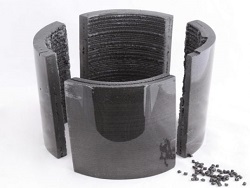
In our days almost no limits to 3D printers. So, researchers at oak ridge national laboratory (ORNL) U.S. Department of energy created with it another object, which previously tried to “print”.
Scientists have made on a 3D printer, the magnet which by its characteristics were better than those produced by conventional methods. In the experiment, they were loaded into specialized apparatus Big Area Additive Manufacturing (BAAM) raw materials and “print” the iron-boron-neodymowy magnet (NdFeB), obtained in industry by sintering.
The researchers note that was created using a 3D printer the object is of “comparable or better magnetic, mechanical and microstructural properties”. And the “unsealing” of the magnet is virtually waste-free production.
At the same time, industrial sintering sends to waste, at least 50% of the volume of the feedstock. Thus, the use of to create magnet 3D printer allows you to halve the consumption of rare earth minerals.
It is worth noting that different research division of the U.S. Department of energy are constantly experimenting with these units, getting new interesting results. For example, recently, scientists from Lawrence Livermore national laboratory used 3D printing technology to obtain a polymer that can absorb methane.
The idea of the unusual study involved the use of methanotrophic bacteria that metabolize methane (CH4), “eating” the carbon. Organisms were placed in the composite, and then he printed polymer for installation for the production of methanol from methane.
“Enzymes of methanotrophic bacteria will retain 100% activity in the polymer — explains project leader Sarah Becker. — The range of application is large enough, in particular in gas-liquid reactions”.
Such a polymer, printed on a 3D printer, can be used repeatedly, and it is possible to achieve extremely high concentration of enzymes, which is pretty hard to achieve even in solutions.






